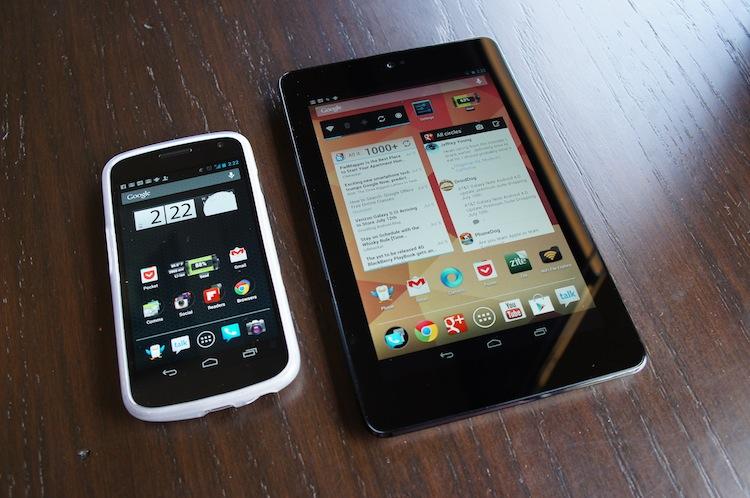
From the time smartphone adoption started growing rapidly, shared data plans were inevitable. Quick and simple or ongoing text message conversations and always-on data connections began to replace the brunt of voice calls that were being placed by wireless users.
And messaging and data packages soon became the staple in the wireless industry, but not without some adversity. As soon as Verizon's Share Everything plans were announced, I lost my nerve and my right eye began to twitch uncontrollably.
I have been a loyal, paying Verizon Wireless customer since the Alltel merger in 2008. My family was an Alltel customer for four years prior to the merger. We all had unlimited data and smartphones and were hardly outrageous users. My mother averaged less than 400MB per month, my sister stayed below 1GB and I was usually below 4GB.
Yet the greedy wireless provider threw our grandfathered unlimited data plans – the very ones were were allowed to keep just one year prior – to the wind, lest we pay full retail value for all smartphones moving forward.
I upgraded my line when the iPhone 5 was released in September and chose the 2GB tiered data plan. I've learned to curb my usage and have yet to face and overage. But I'm still upset about losing unlimited data. It's the principle of the matter, the fact that Verizon had no real reason to abolish grandfathered data plans, other than to for users' hands into much more expensive tiered data plans with hard data caps and overages.
AT&T announced Mobile Share plans shortly after Big Red's Share Everything plans went live. Despite a few discrepancies in price per data package and per device, the end product is virtually the same. The key difference is how AT&T went about the matter, offering Mobile Share alongside tiered data and allowing upgrading customers to keep their unlimited data.
My main issue with these shared plans were that they force customers to pay for things they may not want, such as unlimited voice calling or unlimited text messaging. I, for example, make no more than 100 minutes of voice calls per month and I use Google Voice for SMS, which uses data versus carrier texting. In other words, I would rather simply pay for data and the lowest minute plan possible – maybe even pay per minute. Last month, I use 48 minutes total, which cost me $39.99. Paying AT&T's highest per minute rate, $0.45 per minute, would have only cost me $21.60 plus taxes.
There is a plus side to these shared plans, however, particularly if you have multiple devices or several people.
Up to 10 devices are allowed for a single family plan. With Verizon, the monthly access fee per smartphone is $40, basic phones are $30, hotspots are $20 and tablets are $10. With Mobile Share from AT&T, those monthly access rates for smartphones decrease per higher data package. It's $45 per smartphone per month for $1GB, $40 monthly per smartphone with a 4GB plan, $35 with a 6GB plan and $30 for 10GB and higher. Basic phones, hotspots and tablets are set rates at $30 per month, $20 or $10, respectively.
Shared data plans, in essence, have made owning a tablet with cellular data feasible. Before, you had to purchase a tablet (either with a contract or without) and pay for an entirely different data package, which was $30 or $50 per month. A smartphone with 2GB of data, 450 minutes and unlimited text messaging with Verizon would cost 99.99 per month. Add a tablet with 5GB of data on top of that, and it would be $149.99 each month. Unlimited text messaging, voice minutes and 6GB shared between a smartphone and tablet costs $130 per month. It's 1GB less, but unlimited calling. Even with an overage at $15 for an additional gigabyte, it's $5 cheaper. And the savings grow with additional devices and users.
By adding a tablet and switching to Mobile Share, I wouldn't be saving much money. In fact, I'm just looking at spending more, no matter how I look at it. If I add a tablet right now, I'm looking at paying anywhere from $120 to $140 per month. By switching to Mobile Share, I would be looking at $120 to $135.
But I'm considering adding a tablet to my plan anyway, without switching to Mobile Share. The difference in price is negligible, but the difference in what that money gets me each month is key. By switching to Mobile Share, while I would be able to pay for a single data package, I would be paying for more minutes and unlimited texting that I don't need. For $135 with Mobile Share, I would only have 6GB to play with. Adding a tablet to my current plan, I would have 5GB per device for $5 more – $140 – per month. Or I could drop my smartphone to 3GB, since I would likely use it less, and pay $120 and still have two more gigabytes than the $135 Mobile Share configuration.
That said, if I had more than one smartphone on my account, if it were more than just me using the account, I would almost definitely switch to Mobile Share, since scalability is its key feature.
I have noticed more and more friends and family members adding tablets to their plans and pondering a switch from their old unlimited data plans to shared data. While it doesn't necessarily work out for me, it can save larger families quite a bit of money, especially if they want additional devices, such as tablets.
Have you added a tablet or secondary device to your account since the start of shared data, folks? Have you considered a tablet with cellular connectivity? I have for ages now, but I've never actually pulled the trigger on one.